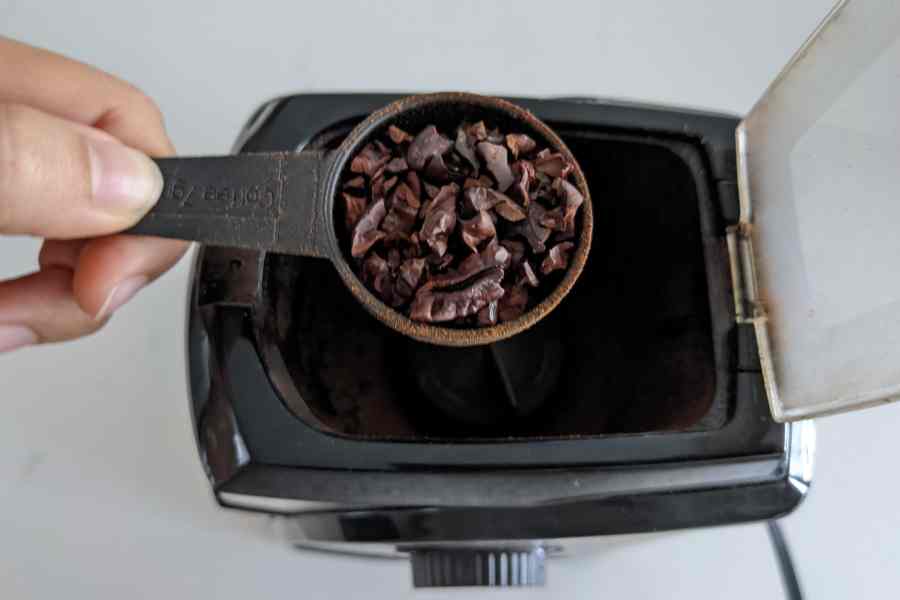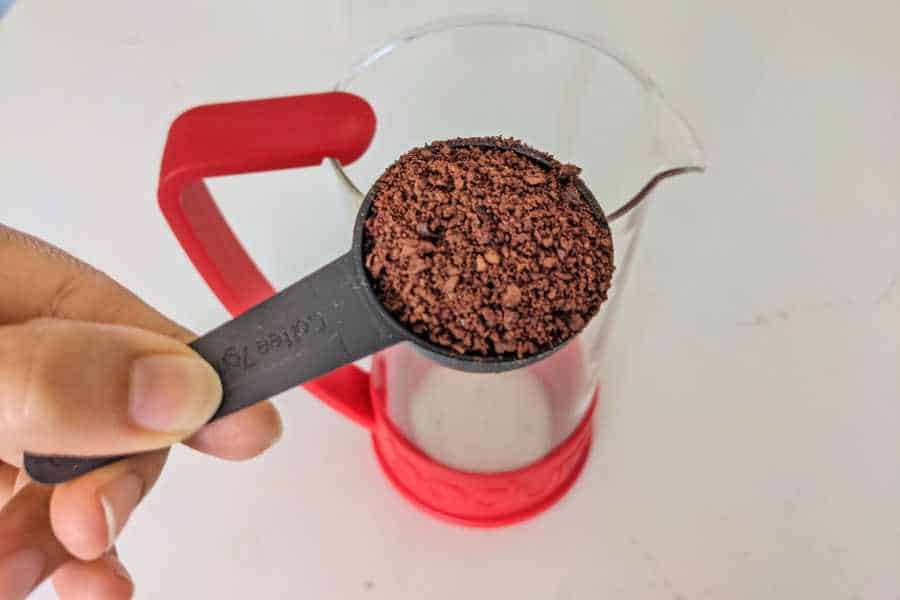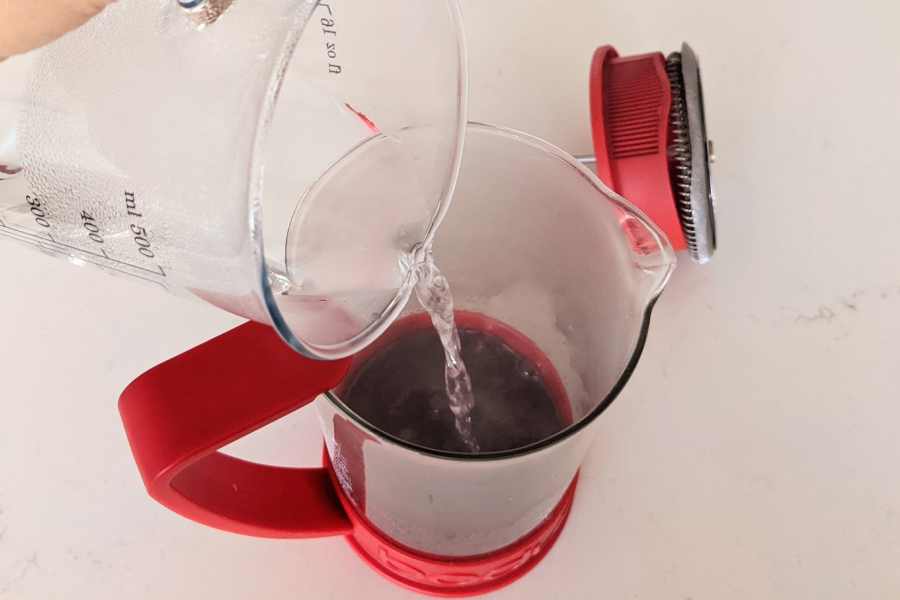Hands up if you can’t function without coffee. Let’s face it, most of us are guilty of having not one but several cups a day! Except, coffee is not always the best choice for some. So, we dig into how the battle between brewed cacao vs coffee started and who keeps the title for you.
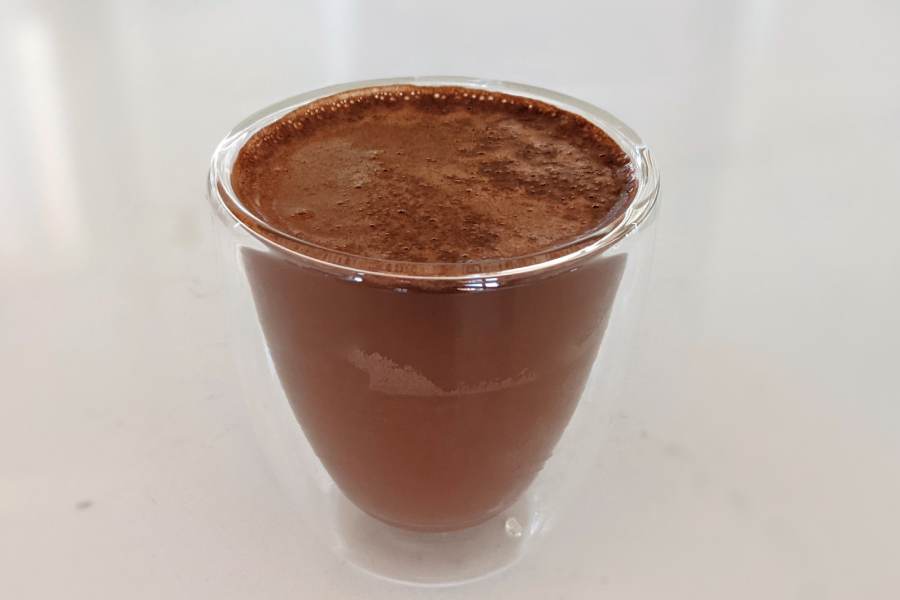
Topics Explored
- What is brewed cacao?
- Varieties of coffee
- Differences between brewed cacao & coffee
- How to make brewed cacao at home
- More questions
What is Brewed Cacao?
Brewed cacao is a good coffee alternative made from cocoa beans. The cocoa beans get roasted and coarsely ground.
Brewed cacao is made by steeping the roasted cacao grounds. It has a naturally sweet and chocolatey taste and can be mixed with plant-based or regular milk.
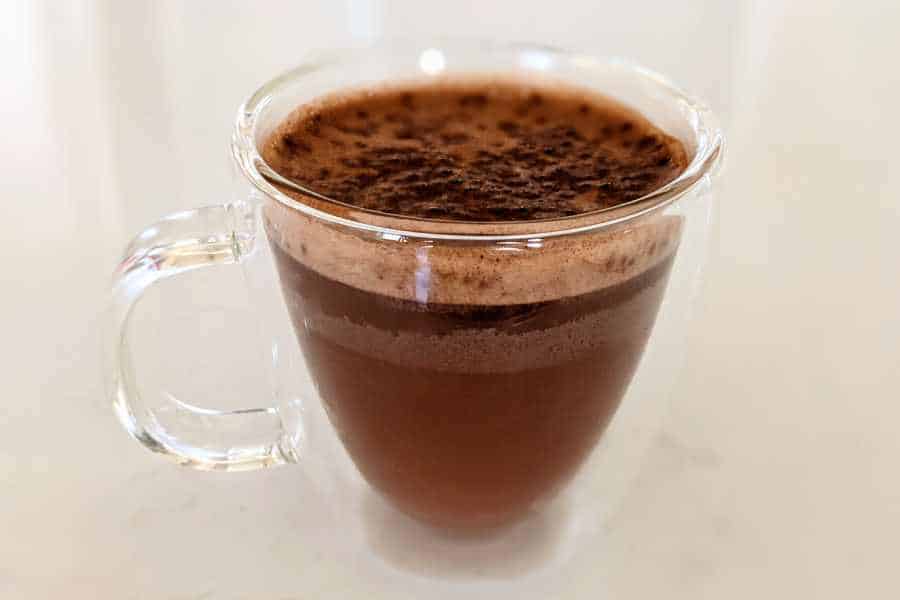
Brewed cacao dates back to 1500 BC when the Olmec people started grinding and brewing the beans. Next were the Mayans who considered it the drink of Gods due to its nutritious value.
Ultimately, the Aztecs were the first to give cacao powder to their soldiers to mix with water on the go to improve their stamina.
Varieties of Coffee
Coffee comes in many forms, and it’s almost impossible to name them all.
We have espresso for those looking for a quick, robust caffeine fix. The latte is one of the most popular choices for coffee with milk, while the frappe is the bubbly, chilled option for those looking for a two-in-one dessert and coffee.

As the legend goes, an Ethiopian herder called Kaldi first discovered coffee after his goats consumed the berries, got energized, and couldn’t sleep all night. It quickly made its way to the Arabian Peninsula, Europe, and New York in the mid-1600s.
Today coffee is the most sought-after good after oil.
Brewed Cacao vs Coffee
We notice many features that trigger our curiosity when evaluating brewed cacao as regular coffee drinkers. But, can cacao replace coffee in the long run? Let’s compare the appearance, brew methods, content, and ultimately – the taste!
| Brewed Cacao | Coffee |
|---|---|
| Limited Brew Methods: French Press or Immersion (Cold Brew) |
Various Brew Methods: French Press, Drip, Pour Over, etc… |
| Light to dark brown Trace amount of visible fat No crema |
Light to dark brown (depending on roast) Visible crema |
| Strong chocolate notes Coats mouth Hint of sweetness |
Bold & caramel notes Light mouthfeel Hint of bitterness |
| High in theobromine pH 6.3 to 6.7(1) ~0 calories |
High in caffeine pH 4.9 to 5.5 ~0 calories |
| Consumed as is or as cold brew | Can be transformed to many beverages |
| Region of Origin: Central America |
Region of Origin: Africa |
1. Brewing Method
Coffee has a plethora of brewing methods – espresso machine, French press, Moka Pot, Pour Over, Drip, Aeropress, etc.
When it comes to cacao, it has only two ways of brewing, steeping it in a French Press for 5 to 7 minutes before straining or cold brew. Cold-brew cacao is made by soaking it with cold water for 24 hours.
2. Appearance
Depending on the brew method, cacao can be medium to dark brown. Even though most of the fat from the cocoa beans is extracted, you can still notice a small amount of fat on top of the brewed cacao.
Depending on the type, coffee is light to dark brown but almost always with visible crema on top.

3. Flavor
Taste-wise, cacao takes the lead – it tastes like melted dark chocolate; it’s rich, slightly viscous, and almost sweet. Each sip coats the mouth, but it’s not as strong as coffee.
Coffee has a lighter mouthfeel, but it’s bolder with some nutty and caramel notes. It has a more pronounced bitterness, unlike cacao.
RECIPE: Dunkin Cocoa Mocha – Bomb Recipe!
4. Nutritional Content
Cacao is rich in nutrients, especially antioxidants and theobromine – a good substitute for caffeine. It has a more neutral pH value than coffee which is acidic.
Coffee is rich in caffeine, with approximately 95 mg per cup(2), while cacao has only 15 mg per cup. Both drinks have zero calories.
5. Variations
Brewed cacao is usually consumed as is to keep its nutritional content and purity. However, it can be made into a cold brew or consumed with milk and spices.
Coffee is more dynamic in this category. It can be a base for coffee beverages like frappes or mixed into cocktails with alcohol.
How to Make Brewed Cacao At Home
If you’re looking to cut caffeine or give up coffee entirely, you need to try brewed cacao. Coffee shops near you might not offer it, but we’ll provide you with a fool-proof recipe for the most delicious cacao you’ll ever taste.
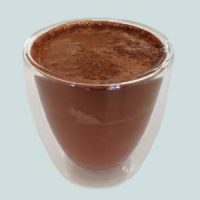
Homemade Brewed Cacao (Easy)
When it comes to brewed cacao vs coffee, homemade brewed cacao is the clear winner! Taste what the Mayans describe as the drink of Gods.
Ingredients
- Cacao nibs: 1 cup*
Gear
- French Press
Instructions
- First up, you'll need a cup of cacao nibs. You can find them in all health food, organic or regular stores in the bulk aisle. Next, preheat your oven to 350 degrees.
- Place the cacao nibs in a single layer on a baking sheet. Roast for 5 to 18 minutes and let them cool completely before transferring to an air-tight container.
- For a single serving, take one tablespoon of the roasted cacao nibs and grind them in your regular coffee grinder. All you need is a couple of pulses; we're not looking for entirely powdered nibs.
- Boil one cup of water on the side. Take your French press and put two tablespoons of the ground cacao nibs. Submerge them with boiling water, and stir gently.
- Let it steep for 5 to 7 minutes, and then press to strain the cacao. This yield makes one serving, so pour it straight into your favorite cup.
- You can enjoy your brewed cacao just like it is; add sweetener of choice, plant or regular milk, creamer, and even spices. We suggest trying it pure to experience its natural flavor.
Notes
* You'll be left with extra roasted nibs for your next brews.
Final Thoughts
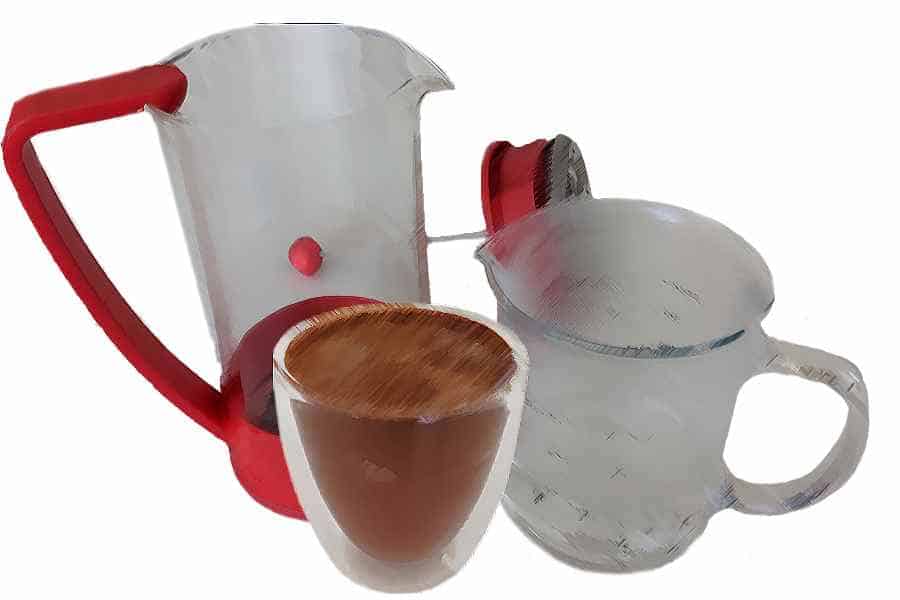
To set the record straight, there’s no substitute for coffee, but some beverages come close. If you’re caffeine-sensitive or just curious to see how your body will react to brewed cacao vs coffee, try it for a while.
While coffee offers substantial amounts of caffeine and more versatility, brewed cacao has theobromine on its side. Nonetheless, both coffee and cacao are packed with antioxidants and offer a delightful taste.
More Questions
What is the difference between cocoa vs cacao?
Cacao and cocoa come from the same plan but undergo different processing. Cacao is the purest form, comes straight from the beans; it’s minimally processed. Cocoa is made by cold-pressing the beans’ cocoa butter, and the residual grounds are turned into cocoa powder. Cocoa often comes with additives like milk powder or sweetener.
Is brewed cacao better than coffee?
It’s hard to say that one is better than the other. Brewed cacao is good for those looking for a coffee alternative or who suffer from GERD since cacao is less acidic than coffee. It’s also high in theobromine – a stimulant that acts differently from caffeine and isn’t addictive.
How much caffeine is in brewed cacao?
Brewed cacao has a trace amount of caffeine. This is the perfect option of you want to stay away from caffeine.
Brewed cacao can contain less than 20 times the caffeine of certain coffee beans. Popular brewed cacao brands have the same amount of caffeine as decaf coffee.
Wondering where your info comes from? We totally understand. Hey Joe only obtains our information from reputable sources. Contents from this article are sourced from the following publications:



